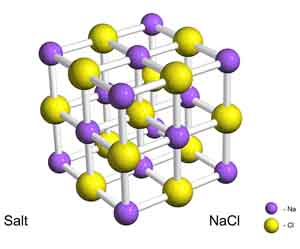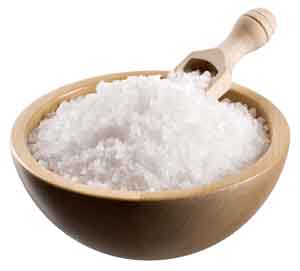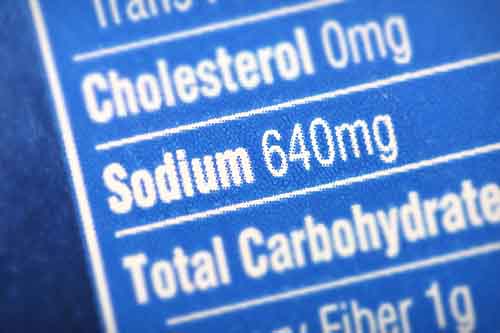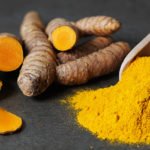A couple of issues ago, I made a passing comment about the AMA’s recent public statement concerning salt, questioning both the validity of their pronouncement and their qualifications to make such a statement in the first place. What a furor it created!
Since then, I have been interviewed by several newspapers, magazines, and appeared on radio talk shows — all to talk about salt. Who knew it was such a big deal? But since it is, it seems worthwhile to revisit the subject again in more detail.
The primary issue that got lost by the AMA is that not all sources of sodium and salt are the same. As far as the body is concerned, there is no connection between the chemically-cleansed sodium chloride table salt you buy in the supermarket (which is also added to virtually every processed food you buy) and the mineral rich organic unrefined sea salt available in health food stores. One can kill you; the other heals you. In fact, it’s essential for life.
Of course, everyone can agree that just like anything else, salt or sodium should not be consumed in excess. (But then again, that’s true of water and oxygen as well.) Which brings us back to why the AMA came out with a warning at all: Americans are consuming ever higher amounts of sodium, up to 6,000 milligrams a day, instead of the recommended 500 to 2,000 milligrams per day. These high amounts, in a form that is unfriendly to the human body and with no ancillary trace mineral benefits, are what lead to serious health problems. However, this is not necessarily the heart of the debate. The issue is that the AMA is against all forms of salt, a broad-brush condemnation designed more for media sound bites than to truly advance the cause of health.
This is a point echoed in a U.S. Food and Drug Administration article “A Pinch of Controversy Shakes Up Dietary Salt”:
“Now modern technology has made salt readily available and at a price almost anyone can afford. As a result, many of us take salt and its merits for granted. But scientists keep salt in the news by debating its role in a healthful diet. At times, discussion and controversy threaten to obscure salt’s importance and to confuse thoughtful consumers.”
So let’s examine the true nature of salt to gain an understanding of how different types of salt act in our bodies. And let’s also examine some real health issues connected with salt; and finally, let’s talk about how to choose and balance salt in your diet.
Brief History of Humans and Salt
 “Worth its weight in gold” is an expression that served well for salt in ancient times. The history of salt is sprinkled with piracy, war, economics, religion, and health. In fact, the next time you contemplate your current salary, consider that the very word “salary” is derived from the Latin word sal because Romans often received their pay in salt. If this is hard to accept, consider that during the Age of Discovery, Africans and European explorers traded an ounce of salt for an ounce of gold — even-steven. Around 110 BC, salt trade was so valued that salt piracy was punishable by death. And Mahatma Gandhi even used salt as major leverage against the British Empire in 1930 when he led thousands of people to the sea to collect their own salt in order to avoid the salt tax imposed by the British.
“Worth its weight in gold” is an expression that served well for salt in ancient times. The history of salt is sprinkled with piracy, war, economics, religion, and health. In fact, the next time you contemplate your current salary, consider that the very word “salary” is derived from the Latin word sal because Romans often received their pay in salt. If this is hard to accept, consider that during the Age of Discovery, Africans and European explorers traded an ounce of salt for an ounce of gold — even-steven. Around 110 BC, salt trade was so valued that salt piracy was punishable by death. And Mahatma Gandhi even used salt as major leverage against the British Empire in 1930 when he led thousands of people to the sea to collect their own salt in order to avoid the salt tax imposed by the British.
The Importance of Salt
One point everyone can agree on is that the body needs sodium chloride to function.
If we look at the big picture for a moment, we can recognize that:
- A human embryo develops in salty amniotic fluid.
- Our developed human bodies possess three distinct fluid systems – blood plasma, lymphatic fluid, and extracellular fluid — all salty fluids.
- As a main component of the body’s extra-cellular fluids, salt helps carry nutrients into the cells. It also helps regulate other body functions, such as blood pressure and fluid volume, and works on the lining of blood vessels to keep the pressure balance normal. The concentration of sodium ions in the blood is directly related to the regulation of safe body-fluid levels.
- 0.9% sodium chloride in water is isotonic with blood plasma. It is known medically as normal saline. It is the mainstay of fluid replacement therapy that is widely used in medicine in prevention or treatment of dehydration, or as an intravenous therapy to prevent hypovolemic shock due to blood loss.
- The propagation of nerve impulses by signal transduction is regulated by sodium ions. (Potassium, another metal closely related to sodium, is also a major component in the same body systems).
- Sodium is an energy carrier. It is also responsible for sending messages from the brain to muscles through the nervous system so that muscles move on command. When you want to move your arm or any muscle in the body, the brain sends a message to a sodium molecule that passes it to a potassium molecule and then back to a sodium molecule etc., etc., until it gets to its final destination and the muscle moves. This is known as the sodium-potassium ion exchange. Therefore, without sodium, you would never be able to move one muscle of your body.
Salt VS Sodium
 Although the words salt and sodium are often used interchangeably when it comes to nutrition, they are not the same. Salt is sodium chloride (NaCl) and Sodium (Na) is, well, just sodium — a soft metal occurring in isolation only on the periodic table of elements or in a lab.
Although the words salt and sodium are often used interchangeably when it comes to nutrition, they are not the same. Salt is sodium chloride (NaCl) and Sodium (Na) is, well, just sodium — a soft metal occurring in isolation only on the periodic table of elements or in a lab.
While it is correct to say that our bodies need sodium, nature has not designed sodium as a solo player but offers it in a complex consisting of natural salt and essential trace minerals, as well as providing it in a variety of foods. Some foods naturally high in sodium/salt are fish, eggs, nuts, prawns, crabs, lobsters and seaweed (Note: all of these natural sources of salt are also natural sources of iodine.) Other naturally occurring sources of sodium (although not quite as high) are celery, carrots, cauliflower, pineapples, jackfruits, and even fresh cow’s milk. And then, of course, there is pure, natural unrefined salt — the salt once worth it’s weight in gold and the focus of this newsletter.
So, with all these great natural sources of sodium, why do we have refined table salt?
Good question.
A Modern Misconception about Salt
Much like the story of refined flour it seems to come down to aesthetics and economics.
- Unrefined salt tends to be off-white or gray in color, whereas refined table salt is bright white. It’s prettier.
- Unrefined table salt tends to clump in the presence of moisture and be unusable in shakers. As for table salt, what’s the slogan for Morton® Salt? “When it rains, it pours.”
- Since unrefined table salt tends to clump in the presence of moisture, grocers and suppliers have to eat the cost of salt that has to be pulled from shelves when it becomes unsellable. Not so with refined salt that doesn’t clump. In other words, refined salt is more profitable.
- Refined table salt has added iodine to make up for the nutrients lost in refining.
As a point of comparison, here’s the story of white flour.
- White flour is “prettier” than brown flour, aesthetically more appealing.
- White flour bakes lighter in texture because it has no bran.
- White flour doesn’t spoil because all the beneficial oils have been removed, which means it lasts far longer on the grocer’s shelf than whole wheat flour. Again, economically more profitable.
- White flour is “enriched” to put back a small amount of the nutrients lost in refining.
- And white flour products are now getting added fiber (sawdust in some cases) and essential fatty acids to improve their nutritional profile.
Salt and flour have suffered the same fate. The process of turning naturally occurring non-white salt into the white-powdery-easily poured table salt involves a distinct trade-off between health and aesthetics/profitability.
And there’s one other financial reason for the dominance of refined salt in the market. Only 7% of salt goes for food; the other 93% goes to industry. Industry requires chemically pure sodium chloride for manufacture of explosives, chlorine gas, soda, fertilizers and plastics. In effect, table salt represents a “cheap” production overrun.
Two Salts
In today’s market, we now have two distinct choices when it comes to salt: unrefined and refined. Unrefined salt (sea salt) is 97.5% sodium chloride (with up to 14% of that being moisture content in some brands) and 2.5% consisting of some 50+ other trace minerals. Refined salt is also 97.5% sodium chloride, but the other 2.5% no longer consists of trace minerals, but rather, chemical additives.
 Unrefined salt is at heart sea salt, but can come from two sources: either freshly dried from the sea, as in Celtic Sea Salt, or mined from ancient inland ocean beds as in the Himalayan Salt and RealSalt brands. In either case, the salt is a naturally occurring complex of sodium chloride, major minerals such as calcium and magnesium, and a complete complement of essential trace minerals. This is the form of salt the body recognizes and is designed to use. (Note: a case can be made that mined salt is actually purer than fresh ocean water salt since the inland beds, unlike ocean water, have been sealed off from all pollution — particularly manmade — for millions of years.)
Unrefined salt is at heart sea salt, but can come from two sources: either freshly dried from the sea, as in Celtic Sea Salt, or mined from ancient inland ocean beds as in the Himalayan Salt and RealSalt brands. In either case, the salt is a naturally occurring complex of sodium chloride, major minerals such as calcium and magnesium, and a complete complement of essential trace minerals. This is the form of salt the body recognizes and is designed to use. (Note: a case can be made that mined salt is actually purer than fresh ocean water salt since the inland beds, unlike ocean water, have been sealed off from all pollution — particularly manmade — for millions of years.)
Note: much of the salt labeled “sea salt” is actually refined table salt unless the package is clearly labeled “unrefined.” (This is also true for Kosher salt!)
Refined salt, on the other hand, is a manmade creation of the last century that contains anti-caking chemicals (with very important health consequences as we shall see in a minute) and added iodine. Iodine was added for people who lived inland and at one time did not benefit from natural iodine found in seafood. Truth be told, all refined table salt is actually sea salt at heart, either refined from the sea (brine sourced) or found in salt mines created by ancient seabed deposits known as halite. Refined salt is processed at high temperatures altering the molecular structure of the salt (not good) and removing the beneficial trace minerals. The human body doesn’t like it.
Refined and unrefined salt act and react differently in our bodies.
Fundamental differences
Unrefined sea salt
- Natural salt is a prime condiment that stimulates salivation and helps to balance and replenish all of the body’s electrolytes.
- The natural iodine in these salts protects against radiation, atomic fallout, and many other pollutants.
- Unrefined sea salt supplies all 92 vital trace minerals, thereby promoting optimum biological function and cellular maintenance:
- Here is a partial list of the minerals found in unrefined salt and their function in human metabolism:
- Sodium: Essential to digestion and metabolism, regulates body fluids, nerve and muscular functions.
- Chlorine: Essential component of human body fluids.
- Calcium: Needed for bone mineralization.
- Magnesium: Dissipates sodium excess, forms and hardens bones, ensures mental development and sharpens intelligence, promotes assimilation of carbohydrates, assures metabolism of vitamin C and calcium, retards the aging process and dissolves kidney stones.
- Sulfur: Controls energy transfer in tissue, bone and cartilage cells, essential for protein compounds.
- Silicon: Needed in carbon metabolism and for skin and hair balance.
- Iodine: Vital for energy production and mental development, ensures production of thyroid hormones, needed for strong auto-defense mechanism (lymphatic system).
- Bromine: In magnesium bromide form, a nervous system regulator and restorer, vital for pituitary hormonal function.
- Phosphorus: Essential for biochemical synthesis and nerve cell functions related to the brain, constituent of phosphoproteins, nucleoproteins and phospholipids.
- Vanadium: Of greater value for tooth bone calcification than fluoride, tones cardiac and nervous systems, reduces cholesterol, regulates phospholipids in blood, and a catalyst for the oxidation of many biological substances.
- Here is a partial list of the minerals found in unrefined salt and their function in human metabolism:
Refined table salt
- Inorganic sodium chloride upsets your fluid balance and constantly overburdens your elimination systems, which can impair your health.
- When your body tries to isolate the overdose of refined salt you typically expose it to, water molecules must surround the sodium chloride molecules to break them up into sodium and chloride ions in order to help your body neutralize them. To accomplish this, water is taken from your cells, and you have to sacrifice the water stored in your cells in order to neutralize the unnatural sodium chloride.
- This results in dehydrated cells that die prematurely.
- Refined table salt contains added iodine, which may indeed have helped eliminate the incidence of endemic goiter, but has conversely increased the incidence of hypothyroidism.
- Refined table salt lacks all trace minerals.
- Refined salt contains anticaking agents such as ferrocyanide, yellow prussiate of soda, tricalcium phosphate, alumine-calcium silicate, sodium aluminosilicate. All work by preventing the salt from mixing with water, both inside the box and inside the human body. This prevents the salt from doing one of its important functions in the organism: regulating hydration.
The problem of excess salt in the diet
Salt and Water
- Fish survive by excreting large amounts of salt through their gills. Humans excrete salt through their kidneys. But there is only so much salt that can be urinated away, and salt-sensitive individuals excrete less sodium than normal.
- Potassium neutralizes the negative effects of sodium. The more potassium you have in your diet, the more sodium you can have without any negative health consequences. Not surprisingly, natural sources of unrefined salt contain potassium; whereas refined salt does not.
- If the body can’t reduce the salt, the next best way to hit the right level is to increase the amount of water. This causes the body’s extremities to swell up.
- If you’re not drinking enough water, the body finds the extra water it needs by robbing its own cells. In extreme cases, neurons shrink and begin to stretch; brain and spinal membranes may begin hemorrhaging. The brain shrinks. Too high a concentration of salt in the body can lead to irritability, muscle twitching, seizures, brain damage, coma, and sometimes death. Usually, though, the results aren’t quite so drastic.
- Dr. Myron Weinberger, an Indiana University medical school professor who authored the salt sensitivity study, says that given the “horrendous excess of salt that we end up with every day,” some individuals can’t get rid of it all, especially those born with subtle kidney problems that may go undiagnosed. Part of the problem is the chemical attraction between sodium and water.
- Hypertension
- High levels of sodium in the diet combined with low water consumption leads to hypertension. “Every grain of salt that is retained in the body carries with it 20 times its weight in water which increases the (amount of) fluid in circulation,” Weinberger said. “If you think of the blood vessels as piping, as you push more fluid in them, then the pressure goes up.”

Conclusion:
Choosing and balancing salt in your diet.
Unfortunately, you can’t rely on fruits and vegetables any more for your trace minerals: they just don’t contain them. Even organic fruits and vegetables are largely deficient, unless the grower goes to the extra expense of remineralizing the soil. In the end, you have to supplement either with unrefined sea salt or with a trace mineral supplement. Of course, we can all agree on one thing: a healthy diet is a diet in moderation.
Unfortunately, refined salt addiction is perhaps as prevalent and subtly dangerous in modern society as drug addiction, poor diet, and a sedentary lifestyle. Excess refined salt increases appetite and decreases bone density. Hmmm!
The bottom line is unrefined natural sea salt is as essential to life as oxygen, water, vitamins, proteins and essential fats — in conscious moderation of course. The health benefits of unrefined salt must not be overlooked based on an overgeneralization in salt guidelines.
In that light, I recommend:
- Use unrefined sea salt (RealSalt, Himalayan, Celtic, etc.) instead of refined table salt.
- Use it in moderation.
- Read labels and back way down on sodium in packaged foods.
- Minimize fast food consumption since most fast food is off the charts when it comes to sodium.
- Avoid salt-based household soft-water systems. They can significantly increase the sodium levels in your body.
- Hydrate sufficiently (but not to excess).
- Keep your kidneys functioning properly. Twice a year (more often if you have kidney problems) use a bottle of chanca piedra or a kidney flush formula.
Addendum 28 Sept 2011 [ed]
A study released in July of 2011 and published in the Archives of Internal Medicine strongly reinforces Jon Barron’s position that the major problem with sodium intake is not with the sodium itself, but with the sodium/potassium ration in the body. Balancing out higher intakes of sodium with higher intakes of potassium is likely to negate any negative effects.1Yang Q, Liu T, Kuklina EV, Flanders WD, et al. “Sodium and potassium intake and mortality among US adults: prospective data from the Third National Health and Nutrition Examination Survey.” Arch Intern Med. 2011 Jul 11;171(13):1183-91. <http://www.ncbi.nlm.nih.gov/pubmed/21747015> And in fact, reducing your consumption of sodium too much may have negative health consequences.
References
| ↑1 | Yang Q, Liu T, Kuklina EV, Flanders WD, et al. “Sodium and potassium intake and mortality among US adults: prospective data from the Third National Health and Nutrition Examination Survey.” Arch Intern Med. 2011 Jul 11;171(13):1183-91. <http://www.ncbi.nlm.nih.gov/pubmed/21747015> |
|---|












Right on, again, Jon! At age
Right on, again, Jon! At age 57, I eat a high-protein, high-fat (healthy), raw vegetable, low-carb diet, and enjoy my sea salt in liberal moderation … and my blood chemistry, weight, and blood pressure are always perfect. (Yes, I occasionally have some non-healthy fun foods.) Most people have too much stress in their lives, and using unrefined salt doesn’t just allow me to eliminate the “fear of salt” from my mind, but I can actually be thankful for the nutritional benefits I am receiving while adding a great “spark” to the taste of my healthy foods.
fascinating. but you must
fascinating. but you must tire of restating the obvious. that said one question comes to mind. chlorides generally tend to be acidic I thought. So whats wrong with avoiding the entire "salt" debate by gaining sodium and potassium (and magnesium?) via bicarbonates? on the face of it that seems a "double whammy". traces plus an alkaline blood effect. No?
Hi Maxwell,
Bicarbonates do
Hi Maxwell,
Bicarbonates do not provide the essential trace minerals found in real salt. So in that sense, salt provides a “double whammy” that bicarbonates do not. The other problem is that bicarbonates are “strongly” alkaline, which may not sound like a bad thing. But people who use bicarbonates daily (for acid indigestion, for example) often find themselves entering a state of alkalosis, in which the body fluids become too alkaline – a state no less harmful than acidosis.
And if nothing else, look to nature. There’s a reason animals will choose a salt lick over a box of bicarbonate every time.
Organic sodium differs from
Organic sodium differs from sea salt or table salt (sodium chloride). Table salt is made from sea salt by refining it. All salt came from the ocean at one time or another. Table salt and sea salt are both inorganic forms of the mineral.
Sodium from a plant for example, is much different than the sodium from rock salts. For the basis of this discussion it would be best to assume that they are not the same at all.
You can eat all the table salt or sea salt you want and the cells themselves can still be sodium or base deficient. The sodium used for building cells has to be organic, from plants and it is the main base mineral we have because there is so much of it.
Sodium is an important natural mineral found especially in leafy greens, celery, seeds, carrots, figs, apples, dried fruit, cabbage.
Salt: The Shocking Truth
Are you slowly losing your eyesight or hearing as you age? Do you seem to be experiencing erectile dysfunction, prostate difficulties, or other organ and sexually related problems as you grow older? Well, it may be related to your salt consumption
A slow deterioration of eyesight, hearing, prostate problems, erectile dysfunction, and premature aging are all problems related to smoking, however if you don’t smoke and are still experiencing some of these problems as you grow older, you might want to examine your salt consumption. Smoking destroys the elasticity of the arterial walls throughout the entire body and restricts blood flow through the smaller capillaries causing an eventual deterioration of the eyesight, hearing, prostate, and subsequent erectile dysfunction due to an abundance of free radicals1 from constituents of the gas phase of tobacco smoke2 which are deposited on the arteries. This creates serious problems throughout the body and especially to life sustaining organs due to diminished blood flow and lack of oxygen.
Salt also destroys the elasticity of arteries and capillaries just as smoking does except t
alt also destroys the
alt also destroys the elasticity of arteries and capillaries just as smoking does except that salt is a totally different constituent. The common name for the damage which salt does to the arteries is hardening of the arteries, and it will ultimately cause a stroke and possible death when an artery eventually becomes too brittle and breaks from the hardening effect that is taking place.
This damage to the arteries is very similar to the tobacco smoke damage. When arteries lack the proper elasticity, blood has a difficult time getting into the capillaries, the small thin-walled vessels, in route to a healthy organ because efficient blood flow is dependent upon proper expansion and contraction of arteries and capillaries. The organ becomes even more effected when the size of the artery decreases due to excessive salt or free radical deposits on the arterial walls. The blood flow through the capillaries diminishes causing deterioration of the eyes, hearing, prostate, sexual organs and the whole body bones and tissues especially the nerves. The results can be devastating if an organ cannot get proper blood flow.
The process of aging is directly correlated to the condition of the arteries.3 Deposits from salt and other free radicals form on the arterial walls and are a major contributor to aging. Keeping the arteries clean is the key to longevity and good health. You have probably been told that you need salt for your body or that a little bit of salt will not hurt you. Well, the truth is that you don’t need salt at all. You need sodium! So why all the confusion about needing salt in your diet?
Sodium is an important mineral in the body as it is responsible for sending the message from the brain to muscles through the nervous system so that your body will move its muscles on command. When you want to move your arm or any muscle in the body, the brain sends a message to a sodium molecule who passes it to a potassium molecule and then back to a sodium molecule etc., etc.,
a potassium molecule and then
a potassium molecule and then back to a sodium molecule etc., etc., until it gets to its final destination and the muscle moves. This is known as the sodium-potassium ion exchange. Therefore without sodium, you would never be able to move one muscle of your body.
Regardless, it is not salt that the body needs in order to sustain life. It is sodium. Sodium just happens to be an element in salt which is known as sodium chloride and that is where the confusion exists. Therefore, salt is not a necessary compound in order for the body to survive, but rather sodium is the necessary life sustaining element. Ironically, sodium is found in all plants so you are getting plenty of sodium everyday without even realizing it every time you eat a food that comes from a plant.
Studies by the Department of Medicine at the Medical College of Wisconsin have shown4 that blood pressure is not increased by a high sodium intake unless it is accompanied by chloride. Common table salt or sea salt being sodium chloride, therefore, actually destroys life rather than sustains it as we are led to believe. We need clean water for life to thrive. You don’t see anyone bottling ocean water to drink. But people will eat salt then drink water? Are you addicted to certain foods because they appear to taste so good? Well, they may be loaded with sodium chloride.
Bertino, Beauchamp, and Engleman5 have shown that the amount of salt preferred is dependent on the amount of salt consumed. In other words, if you are used to eating high amounts of salt, you will be more likely to choose other foods for your diet which are high in salt. The types of food you choose may be entirely dependent on the amount of salt you are consuming.
Food appears to taste better with salt, but it is only an illusion. It is the salt you like and not the food. Have you ever noticed how much more of a certain type of food you will eat when it contains just the right amount of salt? You are convinced that it tastes delicious, but
food you will eat when it
food you will eat when it contains just the right amount of salt? You are convinced that it tastes delicious, but it is only the illusion of just the right amount of salt that tricks the brain into believing that the food tastes better. Does the food actually taste better or is it just that you like the taste of salt? After all, it’s no secret that salted food tastes better. The million dollar question is, “Do you really want to include salt, a substance that slowly destroys the body over time, in your diet everyday and never give your body a break from it?
It can take as long as two to four days to get all the salt out your body but the first thing you will notice is that your extremities, your hands and feet, will become thinner. You will instantly realize just how swollen your extremities become from including salt in your diet everyday.
How do you know if you are eating too much salt? Any amount of salt is to much! Salt is poison in the body. If you become very thirsty after a delicious meal, chances are that meal contained large amounts of salt. By this time the salt has already entered every cell in your body because salt molecules are smaller than the hole in the cell wall and will literally pull water into the cell. Salt molecules essentially become trapped within the cell and osmosis causes the cells to swell, taking water away from other parts of the body, and making you thirsty until you drink enough water so that equilibrium is established and there is the same amount of water on the outside of the cell as there is on the inside. This is the process of osmosis that takes place inside the body when you consume salt.
Cheese is an excellent example of how the brain can be easily tricked. It is difficult to stop eating cheese with only one bite because it tastes so good. However, have you ever eaten saltless cheese? I guarantee that you will not want a second bite of saltless cheese unless you have previously acquired a taste for it. It is extremely bitter
It is extremely bitter and
It is extremely bitter and something you would definitely have to acquire a taste for in order to enjoy it. Another example is butter or margarine. Try using saltless butter or margarine on your toast. You will find out that your toast is absolutely tasteless, and you will realize how you have been tricked all your life. So if you are addicted to salt without knowing it, there is hope. Once you are eventually aware of your high salt intake, you can then create change. Your preferred salt level can be lowered simply by reducing your overall salt intake.5 In other words, your taste buds can easily adapt to changes if you give them a chance. Restricting salt exposure for 8-12 weeks6 enhances the normal taste of foods and lowers your preferred salt level. Foods extremely high in salt include cheese, butter, margarine, chips, ham, mustard, ketchup, mayonnaise, salsa, soy sauce, canned, and packaged foods. You might have found yourself saying, "I don't ever salt my food." Well, when you're able, read the label. Start looking at the ingredients of all the foods you eat, and you will find that salt is in everything you eat. If it tastes too good to be true, you can bet it's the salt. Getting your sodium from plants rather than from salt is one of the better choices you can make. It has been demonstrated that sodium from plants will not cause high blood pressure. Not only does sodium chloride, cause high blood pressure7 and hardening of the arteries, but it also causes unnecessary swelling in every cell of the body and overworks the heart. Getting minerals, like sodium, from plants will help keep your arteries young and elastic. Your blood will flow more efficiently helping to rejuvenate your life sustaining organs, and your sense of smell will improve significantly. Reduction of salt will assist in prolonging your health, well being, and reduce the risk of strokes which are associated with high levels of salt. If you are concerned with longevity and good health, limiting t
Reduction of salt will assist
Reduction of salt will assist in prolonging your health, well being, and reduce the risk of strokes which are associated with high levels of salt. If you are concerned with longevity and good health, limiting the amount of salt in your diet is one of the better choices you can make in your lifetime in order to maintain a healthy and youthful body inside and out.
REFERENCES
1. & 2. Eiserich, J.P., van der Vliet, A., Handelman, G.J., Halliwell, B., and Cross, C: Dietary antioxidants and cigarette smoke-induced biomolecular damage: a complex interaction, American Journal of Clinical Nutrition, Vol 62, 1490S-1500S, 1995.
3. Cutler, RG: Antioxidants and aging. American Journal of Clinical Nutrition, Vol 53, 373S-379S, 1991.
4. Kotchen, TA and Kotchen, JM: Dietary sodium and blood pressure: interactions with other nutrients. American Journal of Clinical Nutrition, Vol 65, 708S-711S, 1997.
5. Bertino, M., Beauchamp, G.K., and Engelman, K: Long-term reduction in dietary sodium alters the taste of salt. American Journal of Clinical Nutrition, Vol 36, 1134-1144, 1982.
6. Mattes, RD:The taste for salt in humans. American Journal of Clinical Nutrition, Vol 65, 692S-697S, 1997.
7. Sacks, Frank M., et.al.:Effects on Blood Pressure of Reduced Dietary Sodium and the Dietary Approaches to Stop Hypertension (DASH) Diet. New England Journal of Medicine, Vol. 344, No. 1, January 4, 2001.
The Dietary Usefulness of Inorganic vs. Organic Minerals
An example of an inorganic substance is salt. It is simply sodium and chloride. No enzymes, thus it is enzymatically inactive and the body cannot use it. Our bodies cannot attach an enzyme to inorganic substances (minerals), except at great cost to our health.
The way elements in a compound are connected determines whether it is organic or inorganic. Here are some definitions:
When a mineral is chemically inorganic, it means that its chemical composition is without carbon. When a mineral is chemically organic, it means that its chemica
When a mineral is chemically
When a mineral is chemically inorganic, it means that its chemical composition is without carbon. When a mineral is chemically organic, it means that its chemical composition is with carbon.
When minerals are labeled agriculturally inorganic, it means that the food grown is tainted with chemical fertilizers. When the mineral content of food is labeled agriculturally organic, it means that the food containing the minerals is grown without chemical fertilizers.
When a mineral is nutritionally inorganic, it means that it is without any organic (carbon-based) molecule. When a mineral is nutritionally organic, it means that it is chelated or bound to organic molecules. (Jensen, pp. 74-84)
Ted Morter in his book, Health and Wellness , defines organic minerals as easily broken apart and inorganic minerals as tightly held together (p. 62).
There is much controversy in the scientific community as to whether or not the body can utilize inorganic minerals in carrying out life processes. However, the vast majority of the scientific community recognizes that ONLY chemically and nutritionally organic food can adequately provide substances, including minerals, that can be utilized by the body at the cellular level (pp. 140-145).
I agree with Merson 100%
I agree with Merson 100%
I have a question on another
I have a question on another topic based on the article on the heart, which is very informative. I have just been diagnosed with atrial fibrillation and am on a betablocker and coumadin. Can you recommend a doctor in the Boston, Ma area who would br able to provide advice on using nattokinase,as you mentioned in the article for this condition? thank you Dolores D.
VERY GOOD ANALYSIS,
THOUGHT
VERY GOOD ANALYSIS,
THOUGHT PROVOKING, MOST OF THE OEOPLE ARE IGNORANT ABOUT THIS MATTER. VERY EDUCATIVE
You say in the article that
You say in the article that unrefined salt is “organic”, but as far as I know it’s inorganic – no carbon atoms – just like refined salt. So how can the body use it properly?
Organic has multiple
Organic has multiple definitions. Containing Carbon applies only to the "chemistry" definition of organic. Organic is being used here in the sense of simple, healthful, close to nature — as in "living an organic lifestyle." Unrefined salt is the form of salt utilized by all life forms other than modern man, who consumes refined salt modified with synthetic flow agents and iodine isolates.
I purchase 'Saxa' brand "All
I purchase ‘Saxa’ brand “All Natural Rock Salt- Evaporated Sea Salt”. It has no added ingredients. Are these salt crystals unrefined? Do they provide the added health benefits that are beneficial when using salt? When originally purchasing this product, I thought I was choosing the healthiest option but maybe not so after all.
Thankyou
Could you explain how iodine
Could you explain how iodine added to salt could cause hypothyroidism?
Here is a great article on
Here is a great article on the topic: http://www.jonbarron.org/article/endocrine-system-thyroid-and-parathyroid-gland